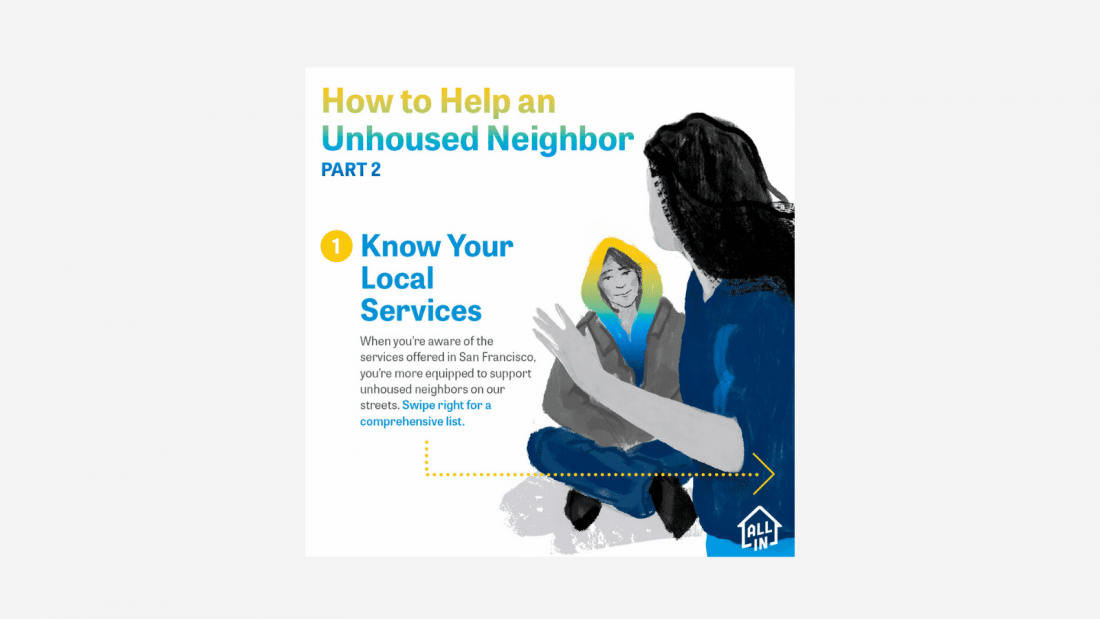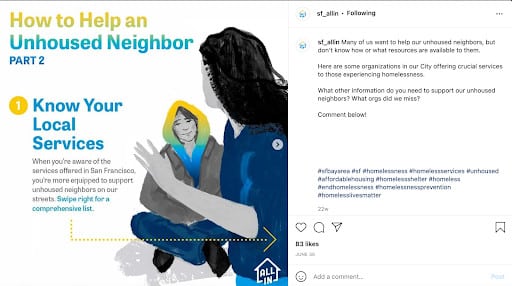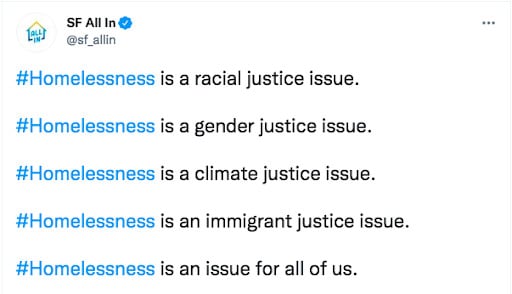
The Five Building Blocks of a Digital Advocacy Campaign, Part 1
At Media Cause, we conceptualize advocacy as shifting the balance of power. Effective advocacy, which leads to systemic and cultural change, starts with the stories we tell—and believe—about our own experiences, community, and world.
Digital advocacy allows us to tell our stories creatively and on a scale that wasn’t previously possible. Whether you’re working to end sexual violence or advocating for unhoused residents, the first building block of a successful digital advocacy campaign begins with telling an impactful story.
#1. Identify Your Own Story
What ignites your passion for an issue?
It’s our own stories about the cause for which we’re fighting that connect and bond people on a peer-to-peer level. (People connect with people, not brands.)
To build a meaningful digital advocacy campaign, we must start with real, human stories as to why we’re here and why people should care (think the story of self, the story of us, and the story of now—the Public Narrative framework created by Marshall Ganz). Once you’ve identified your organization’s “why”, you can create an even more compelling story for your audience.
#2. Understand Your Audience
Knowing who you’re trying to reach and what they’re about is key to crafting a winning story.
Which audience is key in taking the actions needed to achieve your advocacy goal?
Are you trying to persuade ambivalent people or activate your base?
Once this is determined, it’s time to get researching. We call this process of information-gathering the “discovery” phase. The goal of the discovery phase is to understand what your audience cares about, their values, and their concerns.
Of course, it’s helpful to begin with the resources available to you. Organizations like Culture Surge, The Frameworks Institute, and the Berkeley Media Studies Group are particularly helpful in understanding the messaging research already out there. These folks do the hard work of collecting data on how people think about certain topics, like climate change and racial justice. The Center for Community Change, for example, found in their research that messaging that leans into the lens of family and progressive values of community, fairness, and freedom performs best.
Once you’ve done that initial digging, turn to your own community. Conduct stakeholder interviews, run focus groups, send out supporter surveys, and look for patterns in your comments on social media, or comments on news articles related to your issue area. For our client All In, a campaign uplifting proven solutions to homelessness in San Francisco, we used supporter surveys to inform the content for a neighborhood resource guide intended to foster community leadership.

With this knowledge under your belt, you can begin to craft your story.
#3. Structure Your Message Effectively
The way we structure our stories is key to maximizing their impact. Our words matter, but the way we organize them is just as important.
While it may be tempting to lead with the problem, it’s actually more effective to lead with shared values. Frankly, people don’t want any more problems. And they certainly don’t want problems that seem insurmountable like homelessness, for example. By leading with shared values (that you now understand because you did step #2), you disarm people and connect with them on a more human level.

Once you’ve established this commonality, you can then move into the problem, and most notably, your vision for the world you want to create. As showcased above, we appealed to our followers’ desire to help people, while providing the tools to help them do so to actualize our vision of a compassionate community.
Now that you have the key points that speak to each component of your message (i.e. shared values, the problem, and your vision), it’s time to identify which stories will bring your messaging to life. Strategic stories should strike an emotional chord—emotions that typically motivate people, like hope or connection.
Throughout your messaging, avoid passive language. All movements can benefit from making it clear which people, or systems, are causing harm.
#4. Don’t Be Afraid To Call Out The Problem
On that note, we can’t be afraid to name who is responsible for the problem and larger systemic patterns. If we don’t give people a tangible and compelling explanation for why our problem exists, any solution will feel just as abstract.
In the case of the All In campaign, we are intentional about framing homelessness as an intersectional issue that has roots in a myriad of social injustices. By doing so, we lay out how these systems contribute to homelessness while also giving people an “origin story”, as the FrameWork’s Institute calls it.

Many of us shy away from rocking the boat and pointing directly to the people and systems responsible for the problem. But when we don’t, we leave our audience confused and unmotivated, while we move even farther away from achieving our advocacy goals.
#5. Share Your Vision For Change
What’s most critical, however, is painting a picture of the world we want to create. (If there’s no compelling future to work towards, what’s the point of any of this?)
Looking at the example of our client All In, we shared the successes of solutions to homelessness — like the Flex Pool Program — to show that it is possible to house San Francisco residents.
Ultimately, we can’t simply be against something, we need to be FOR something. That means our messaging won’t be effective if we’re simply talking about reducing homelessness, we’re instead talking about housing people. Center what you want to create. And then give people an active role in helping you actualize this vision.
With digital advocacy, our stories can enter the zeitgeist on a new scale, and it’s our challenge to make sure those stories catch fire to activate our base and motivate supporters.
The foundation of a nonprofit digital advocacy campaign is telling a winning story, and from it grows the most significant building block: building authentic relationships and creating a sense of community. Check out examples of Media Cause’s advocacy work to learn more.